How to lay porcelain paving
Porcelain paving is a great way to create a low-maintenance, family friendly garden space. If you’re reading this, you’ve likely just bought some porcelain paving for your own garden (or you’re about to). And now you’re wondering whether you can lay your new slabs yourself, of whether you should hire a professional to do it?
While we’d always recommend using a professional installer for the best results, you can lay porcelain paving with the right tools and guidance.
In this guide, we’ll give you step-by-step instructions on how to lay your porcelain slabs and what tools and materials you’ll need along the way.
Laying porcelain paving: product & tool checklist
Here's a list of all the products and tools you'll need before you start laying your porcelain patio:

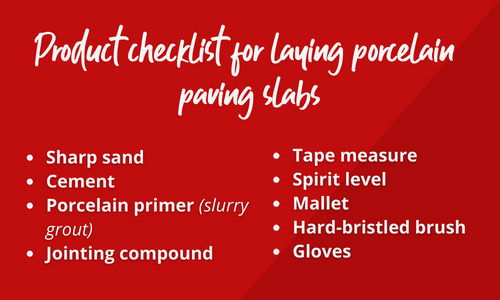
How to lay porcelain paving: step-by-step guide
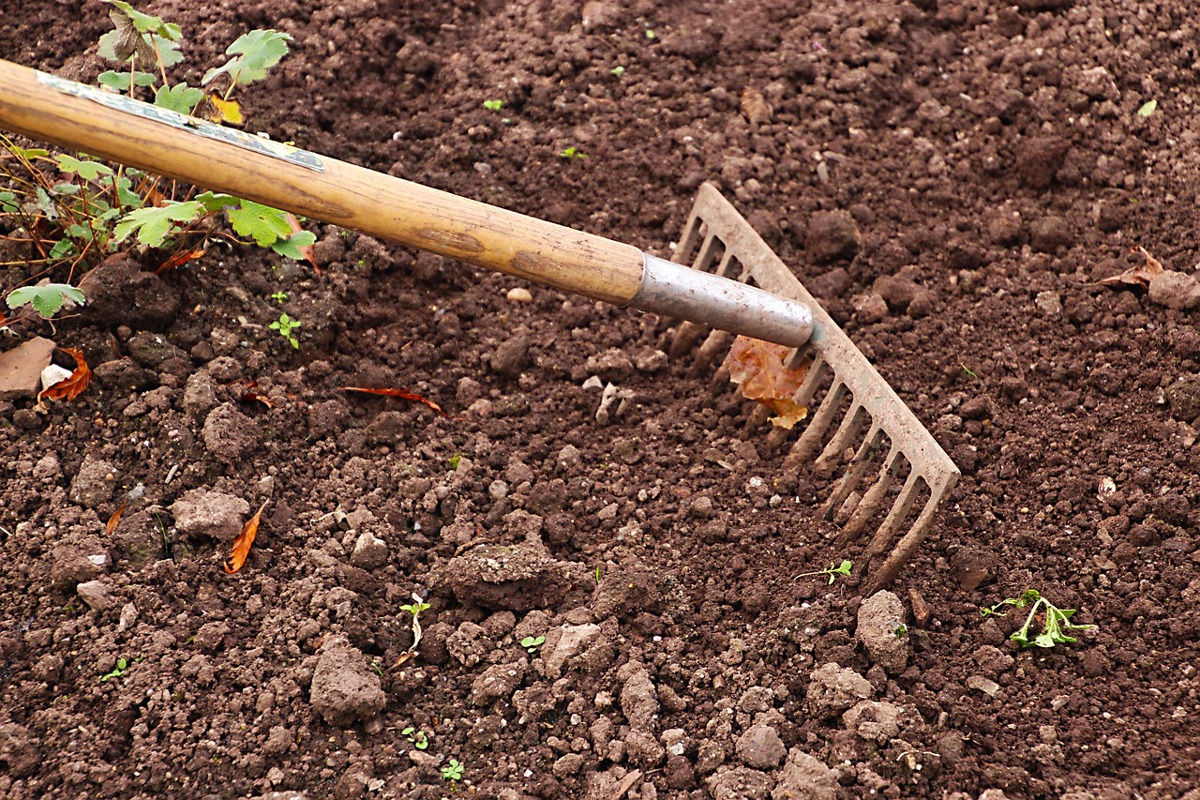
Step 1 – Clear your ground
Before you start laying porcelain paving, take some time to plan and prepare the area where you want to install it.
Measure the space where you plan to lay pavers accurately and mark out with wooden pegs. Clear the marked space of any soil, vegetation and roots.

Step 2 – Preparing your ground for paving
You’ll need to dig out to allow for sub-base depth, laying bed depth and paving depth.
Commonly for a garden patio, a compacted 100mm – 150mm sub-base is adequate. For example, if you were installing a 20mm thick paver, on a domestic patio with a 100mm sub-base and 30mm mortar bed, you’d need to dig down approximately 150mm.*
Don’t forget to account for drainage! You’ll have to allow for a gradient when digging out to ensure that water runs off to the nearest drainage. Vitripiazza suggest that a 1 in 60 fall is enough for most domestic patios.

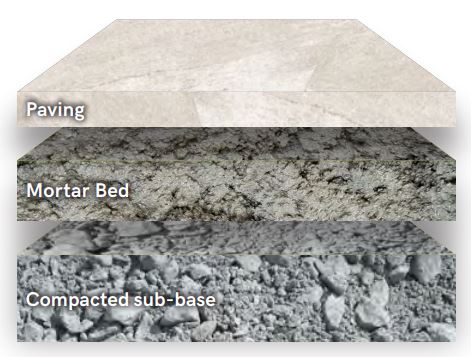
Step 3 – Sub-base
Fill the area with MOT Type 1. A 100mm base will require 150mm of MOT Type 1 compacted down to 100mm. This can be achieved in 2x 75mm thick layers.
Step 4 – Priming your porcelain
Because porcelain is non-porous, it has a hard time sticking to mortar. So each slab requires priming on the reverse side before it is laid onto mortar.
We recommend EASYPrime Porcelain Paving Primer. (Porcelain primer is also known as slurry grout.)
Step 5 – Time for mortar
You’ll need to mix a fresh bed of mortar for each porcelain slab you to prevent the mixture drying out.
For vitrified porcelain pavers, a full mortar bed is required. Vitripiazza recommend a wet mix of 5 or 6 parts sharp sand to 1 part cement. A mortar thickness between 15mm and 30mm will be enough. (If you’re using a different porcelain paving manufacturer, please check their guidance on mortar mix ratios.)
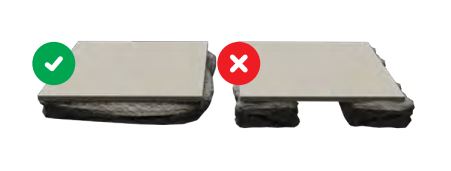
Using a trowel, lay your mortar mix onto the sub-base. Rather than laying all your mortar at once, we recommend laying mortar for one slab at a time to prevent it from drying out.

Step 6 – Laying your porcelain slabs
Lay your primed porcelain paving slab onto the mortar mix and gently tamp down with a rubber mallet.
Check your placement with a spirit level and make any adjustments quickly before the mortar dries.
As you continue to lay your porcelain slabs, make sure to leave at least a 5mm joint between each slab.
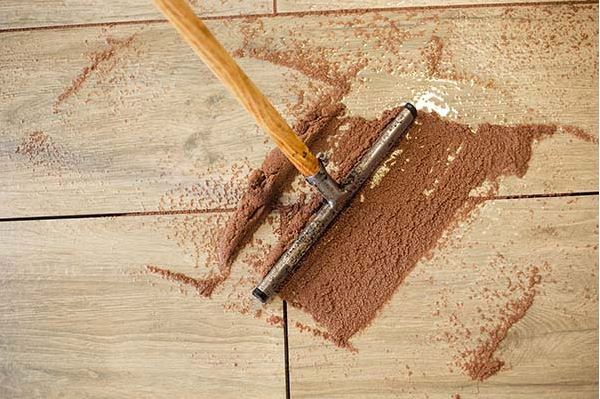
Step 7 – Jointing
Congratulations, you’ve laid your slabs! To complete your patio, you’ll need to use a jointing compound to fill the gaps between your slabs.
We recommend using a sweep-in product, like EASYJoint paving joint compound.
Allow at least 24 hours for the compound to dry and the slabs to settle before enjoying your new patio.
Top tips for laying a porcelain patio
- AVOID getting mortar on the face of your porcelain paving slabs. It stains and is extremely difficult to remove.
- Is rain forecast when you plan to lay your patio? Ah, the good old British “Summer”. If you’re in the process of laying your patio or you’ve just completed it, covering the area with a tarpaulin until the poor weather passes is a good idea.
Porcelain paving FAQ
Yes, porcelain paving can be laid over existing concrete slabs or on a concrete surface, but make sure it’s in good condition.
Porcelain pavers needs a stronger bond than other types of paving slabs. Our chosen supplier of porcelain paving, Vitripiazza, recommends a wet mix of 5/6 parts sharp sand to 1 part cement. Other porcelain paving suppliers may recommend different ratios.
One of the benefits of porcelain paving is its low porosity, which means its great at resisting water. So once you’ve laid your porcelain pavers there’s no need to seal them.
Vitripiazza, our porcelain paving supplier, recommends a minimum 3mm joint for rectified porcelain paving and 6mm for unrectified porcelain. All our Vitripiazza porcelain paving is rectified.
Cutting vitrified porcelain is trickier than other types of paving, so we recommend using specialist cutting blades to achieve a neat cut. We stock 3 sizes of porcelain paving cutting blades to fit powered disc cutters.
- Note! ‘Colour-bodied’ porcelain does not cut as neatly as the ‘Full-bodied’ porcelain. You may get better results using a 4” angle grinder or 7” or 9” bench cutter, particularly for lots of cuts or intricate work. The smaller wheel cuts down on vibration and should achieve a neater finish.
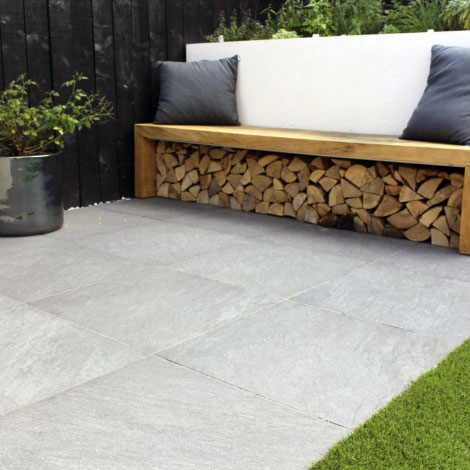
Need more information about porcelain paving?
If you’re yet to buy your porcelain paving slabs, or even decide if porcelain pavers are right for your outdoor space, we’ve got all the information you need.
Available in 3 different ranges, Vitripiazza produce some of the finest quality porcelain paving slabs available. Find out more about why we supply Vitripiazza porcelain paving and discover which range will best suit your outdoor space.
We get asked lots of the same questions about porcelain paving. Is it slippery? How do you clean it? If you’ve got a question about porcelain paving, we’ve very likely supplied the answer on our porcelain paving FAQ.
But if you’ve still got some questions about porcelain paving, just ask! You can speak to your local Elliotts branch, or drop us a message here.
*Information from our Porcelain paving supplier, Vitripiazza. View their full guide here.
Featured products
EASYJoint Select Paving Compound Platinum, 12.5kg

EASYJoint Paving Joint Compound Buff, 12.5kg

EASYGrout Argent, 15kg Tub (3 x 5kg)

Ox MPT230 230/22 Porcelain Cutting Blade, 230 x 22mm




